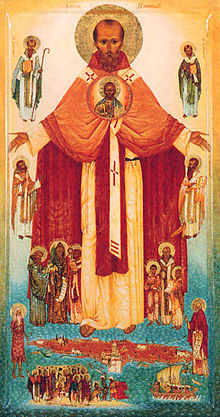If you are saying the Office, the first thing you have to decide is which particular 'hour' of the day you are going to say, and find the appropriate standard, fixed texts in your Office book.
Accordingly, in the last two parts of this series on the calendar I have looked briefly at the daily cycle of hours, and noted that there are some texts that for all of the hours, there are some texts that stay the same each day, regardless of feasts or seasons (a few special days apart), and not all of these are repeated each day in many Office books.
The next thing you need to know (unless you are saying Compline only) is the day of the week, since some texts change with the day.
The psalms of the day of the week
Accordingly, in the last two parts of this series on the calendar I have looked briefly at the daily cycle of hours, and noted that there are some texts that for all of the hours, there are some texts that stay the same each day, regardless of feasts or seasons (a few special days apart), and not all of these are repeated each day in many Office books.
The next thing you need to know (unless you are saying Compline only) is the day of the week, since some texts change with the day.
The psalms of the day of the week
The key moving part for days of the week are the psalms, and the antiphons attached to them.
In his Rule, St Benedict specifies that all 150 of the psalms should be said each week, and sets out his preferred allocation of psalms to particular hours.
St Benedict makes it clear in the Rule that Sunday is always the first day of the week so far as the psalm cycle is concerned. As Sunday always starts from I Vespers though (ie Saturday night), it also has a 'last' or eighth day character, as a special celebration of the Resurrection.
It is this allocation of psalms that forms the basis of the Diurnal (and other books used for the 1962 Office).
St Benedict actually employs three different patterns for the allocation of the psalms to hours:
The days of the week at Matins, Lauds and Vespers
The other key 'moving parts' associated with the day of the week are the hymns of Lauds and Vespers, the New Testament canticle antiphons, and the invitatory antiphons at Matins.
In particular, note that for most of the year (special seasons and feasts aside), each day of the week has a specific hymn of the day at each of these hours.
At Vespers, the hymns (Saturday aside), traditionally ascribed to St Gregory the Great, remind us of the relevant day of creation, allusions to which can also be found in the psalms of the hour for each day.
How the hour and day cycles come together: the ferial Office
If you are learning the Office, I strongly recommend focusing on learning the default or 'ferial' hourly and daily cycles - the Office as it is said on days other than feasts or during special seasons - first, before you start worrying about seasons and feasts.
St Benedict makes it clear in the Rule that Sunday is always the first day of the week so far as the psalm cycle is concerned. As Sunday always starts from I Vespers though (ie Saturday night), it also has a 'last' or eighth day character, as a special celebration of the Resurrection.
It is this allocation of psalms that forms the basis of the Diurnal (and other books used for the 1962 Office).
St Benedict actually employs three different patterns for the allocation of the psalms to hours:
- one hour, Compline, has only one set of psalms used everyday - perhaps reminding us of the unity of God, and our aim to join with this;
- three hours (Terce, Sext and None) have three sets of psalms they use across the week (for use on Sundays, Mondays, and Tuesdays to Saturdays) - the number perhaps highlighting the Trinitiarian focus of these hours;
- the remaining four hours (Matins, Lauds, Prime and Vespers) have a set of psalms for each day of the week.
The days of the week at Matins, Lauds and Vespers
The other key 'moving parts' associated with the day of the week are the hymns of Lauds and Vespers, the New Testament canticle antiphons, and the invitatory antiphons at Matins.
In particular, note that for most of the year (special seasons and feasts aside), each day of the week has a specific hymn of the day at each of these hours.
At Vespers, the hymns (Saturday aside), traditionally ascribed to St Gregory the Great, remind us of the relevant day of creation, allusions to which can also be found in the psalms of the hour for each day.
How the hour and day cycles come together: the ferial Office
If you are learning the Office, I strongly recommend focusing on learning the default or 'ferial' hourly and daily cycles - the Office as it is said on days other than feasts or during special seasons - first, before you start worrying about seasons and feasts.

